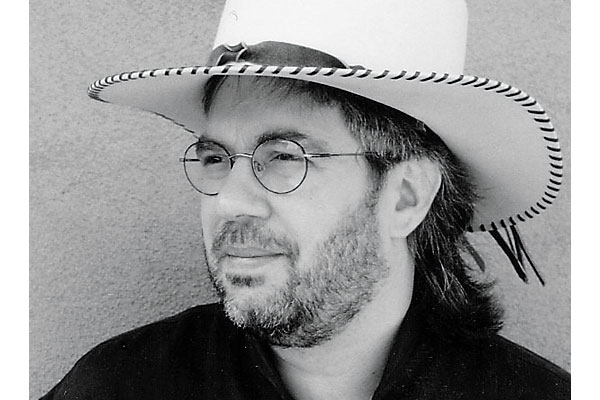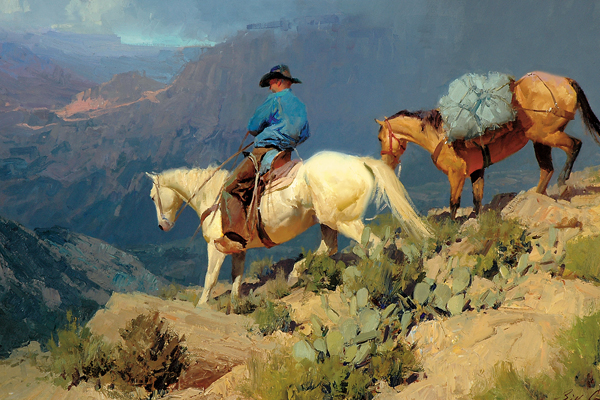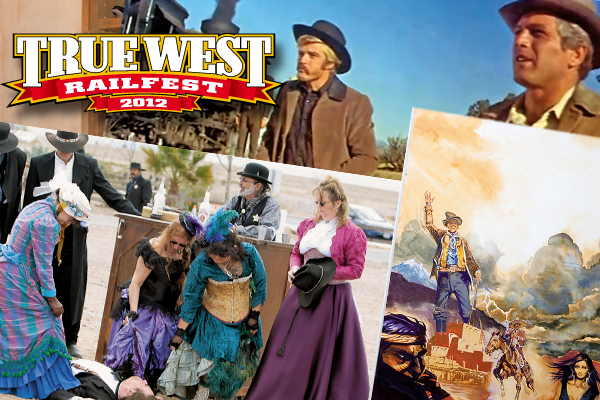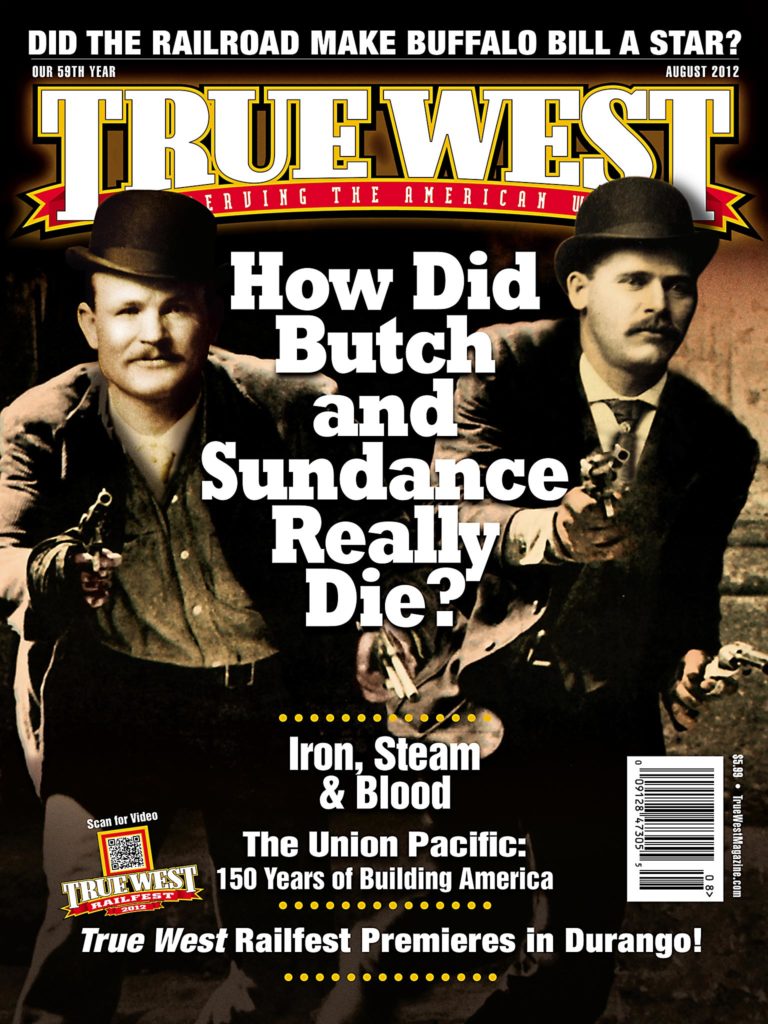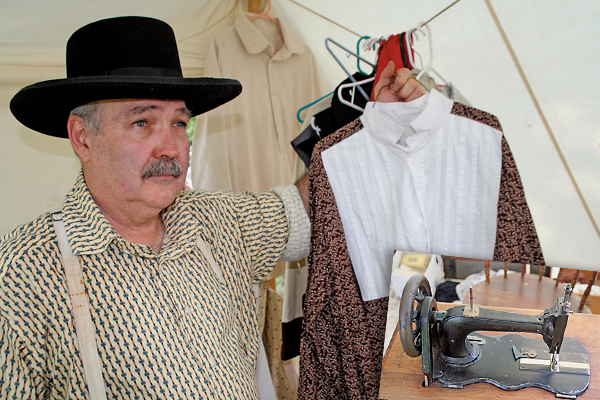 As I walk across the grounds of the John Brown Museum in Osawatomie, Kansas, during the annual Freedom Festival, I am surrounded by re-enactors.
As I walk across the grounds of the John Brown Museum in Osawatomie, Kansas, during the annual Freedom Festival, I am surrounded by re-enactors.
By grab, I just talked to Theodore Roosevelt and John Brown, and I’m waiting for a slew of folks in period attire to start the 1856 Battle of Osawatomie all over again. Then I’m invited inside Jack Pruett’s tent.
Pruett—alias Boilerplate Jackson—is a re-enactor too, but not like any I’ve come across. You won’t find him armed with an 1851 Navy Colt, replica or antique. His weapon of choice is an 1865 Singer sewing machine.
Pruett has zero interest in playing abolitionist John Brown or President Teddy R. or Missouri pro-slavery militia leader John Reid. All he wants to do is champion an unheralded Western hero—the tailor.
“Many people today find it an oddity to find a man behind a sewing machine,” he says.
Don’t knock it. Tailors helped win the West. Well, they helped dress the Wyatt Earps and Buffalo Bills anyway.
Pruett, who hails from Topeka, was interested in re-enacting, but needed a wardrobe. “My wife said, ‘We’ve got three kids. If you want it, you’re going to have to make it yourself.’”
That’s what he did. He taught himself how to sew, how to cut out patterns and how to turn three yards of calico cotton into a shirt. Collarless, of course. Pullover. Period-correct.
He eventually lost interest in playing a Kansas Jayhawker and became obsessed with tailors, and telling their story at events like Freedom Festival.
“Tailoring was kind of a craft,” he says, “and then you made it your business. But it was kind of like an artist. What type of livelihood depended on what you made.”
The same, of course, was true for seamstresses and dressmakers. “For some reason, the seamstress did a lot more elaborate jobs than a tailor,” Pruett says. “But many seamstresses barely scratched out a living.”
Pruett prefers the role of a “mudsill” tailor, that guy who plied his trade in a shop with a dirt floor. Maybe that’s why he works in a tent. Don’t knock it. When Andrew Johnson was only 10 years old, his mother apprenticed him to a mudsill tailor. Johnson would end up being president of the United States. After that little impeachment thing, though, he might have wished he were back in Tennessee sewing on buttons.
Period shirts hanging in Pruett’s tent flap in the wind, but Pruett isn’t selling his clothes. They are merely props he can use to educate passersby.
Take that false-front shirt, with the pleated and ruffled white inset on the chest of an otherwise calico cotton shirt. That style was popular for the lower class, Pruett tells me. Going to a party? Once you put on your coat, the bib would look as if you were wearing a tuxedo shirt—only you wouldn’t have to spend a fortune to buy a formal shirt.
Go figure. I always thought they were just cool-looking duds.
No pretending here. Pruett is an old-school tailor teaching the ways of the West. He doesn’t have to act as if he’s someone else. He has an important goal too. “I’m keeping the art of tailoring alive,” he says.
That’s a good thing. After all, how many more Doc Hollidays does the West really need?
Johnny D. Boggs has been known to sew on buttons, but getting them to stay on is a skill he has yet to master.


